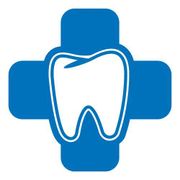What Is Getting a Tooth Extraction Like?

Sometimes, a tooth will experience such trauma or decay and require a tooth extraction. Otherwise, a tooth will crowd the mouth and present other health complications. An extraction will reduce your risk of infection and ensure that other teeth remain healthy. Here’s what you should know about this procedure.
What’s the Difference Between Extractions?
A simple tooth extraction removes a tooth that is visible in the mouth. Most teeth that have been damaged by extreme decay can be removed in this matter. Surgical extractions are used when a tooth has not emerged through the gum, or if it was broken off near the gums.
How Is a Tooth Extraction Performed?
 Both simple and surgical extractions begin with the dentist numbing the area around the affected tooth with a local anesthetic. For surgical extractions, the patient is sometimes given a general anesthetic so they will sleep through the procedure. In a simple extraction, a tool called an elevator is then used to loosen the tooth and then remove it with forceps. The empty socket is then washed and stitched up.
Both simple and surgical extractions begin with the dentist numbing the area around the affected tooth with a local anesthetic. For surgical extractions, the patient is sometimes given a general anesthetic so they will sleep through the procedure. In a simple extraction, a tool called an elevator is then used to loosen the tooth and then remove it with forceps. The empty socket is then washed and stitched up.
For surgical extractions, the dentist must make an incision in the gums to access and remove the tooth. Depending on the complexity of the extraction, minuscule pieces of gum and bone may need to be removed as well. Once the tooth is accessible, the rest of the procedure continues similarly to a simple extraction.
Whether you need routine teeth cleaning or tooth extraction, you can expect high-quality, friendly dental treatment from Charles P. Debbane, DDS in Hamilton, OH. Serving patients for over 25 years, Charles P. Debbane D.D.S. and Laura M. Arnold D.D.S. will help you maintain a beautiful, healthy smile. To learn more about what these dentists can do for you, visit them online or call (513) 887-6654.
About the Business
(21 reviews)
Have a question? Ask the experts!
Send your question

